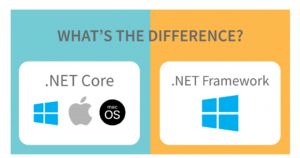In today’s digital age, preserving information is more important than ever. With the vast amount of data being created and stored every day, it’s crucial to have a reliable system for storing and preserving this information for future generations. This is where BAS2 comes in. BAS2 is a file format used for storing and preserving digital data. In this article, we’ll explore what BAS2 is, how it works, and why it’s important for digital preservation.
What is BAS2?
BAS2 is a file format that was developed in the 1980s for use with the Sinclair ZX Spectrum, a popular home computer in the UK. The file format was used to store basic programs and data on cassette tapes, which were a common storage medium at the time. BAS2 files are essentially text files that contain the basic code used to run programs on the ZX Spectrum.
How does BAS2 work?
BAS2 files are written in BASIC, a programming language that was widely used in the 1980s. The files contain the code used to run a particular program, as well as any data that the program uses. This data can include anything from text and graphics to sound and music.
To use a BAS2 file, you need to load it into an emulator or a real ZXSpectrum computer. An emulator is a program that simulates the hardware and software of the original computer, allowing you to run programs and games on modern computers. Once loaded, the program can be run just like it would have been on a real ZX Spectrum.
Why is BAS2 important for digital preservation?
BAS2 may seem like an outdated file format, but it’s actually an important part of digital preservation. In the early days of computing, many programs and games were distributed on cassette tapes. These tapes were not always reliable, and over time, they could degrade, making it difficult or impossible to access the data stored on them.
By converting BAS2 files to digital formats, we can preserve the programs and games that were stored on cassette tapes. This allows future generations to experience and learn from the software and games that were created in the early days of computing. Without digital preservation, this important part of our technological history could be lost forever.
How to convert BAS2 files to digital formats
Converting BAS2 files to digital formats is relatively simple, but it does require some technical knowledge. Here’s a step-by-step guide:
- Obtain a copy of the BAS2 file you want to convert. This can be done by downloading it from an online archive or by transferring it from a real ZX Spectrum using a cassette tape interface.
- Install an emulator on your computer. There are many emulators available, but some popular ones include ZXSP, Fuse, and UnrealSpeccy.
- Load the BAS2 file into the emulator. This is usually done by opening the emulator and selecting the option to load a file.
- Run the program to ensure that it works correctly.
- Save the program in a digital format. This can be done by using an emulator feature to save the program as a disk image or by copying the code and data to a text file.
- Store the digital copy of the program in a safe place. This can be on a hard drive, in the cloud, or on physical media such as a USB drive.
By following these steps, you can convert BAS2 files to digital formats and preserve the programs and games that were created in the early days of computing.
Conclusion
BAS2 may seem like an outdated file format, but it’s actually an important part of digital preservation. By converting BAS2 files to digital formats, we can preserve the programs and games that were stored on cassette tapes and ensure that future generations can experience and learn from these important pieces of technological history.
While it may require some technical knowledge to convert BAS2 files to digital formats, it’s a relatively simple process that can be done with the help of an emulator. By doing so, we can ensure that our digital heritage is preserved for years to come.



